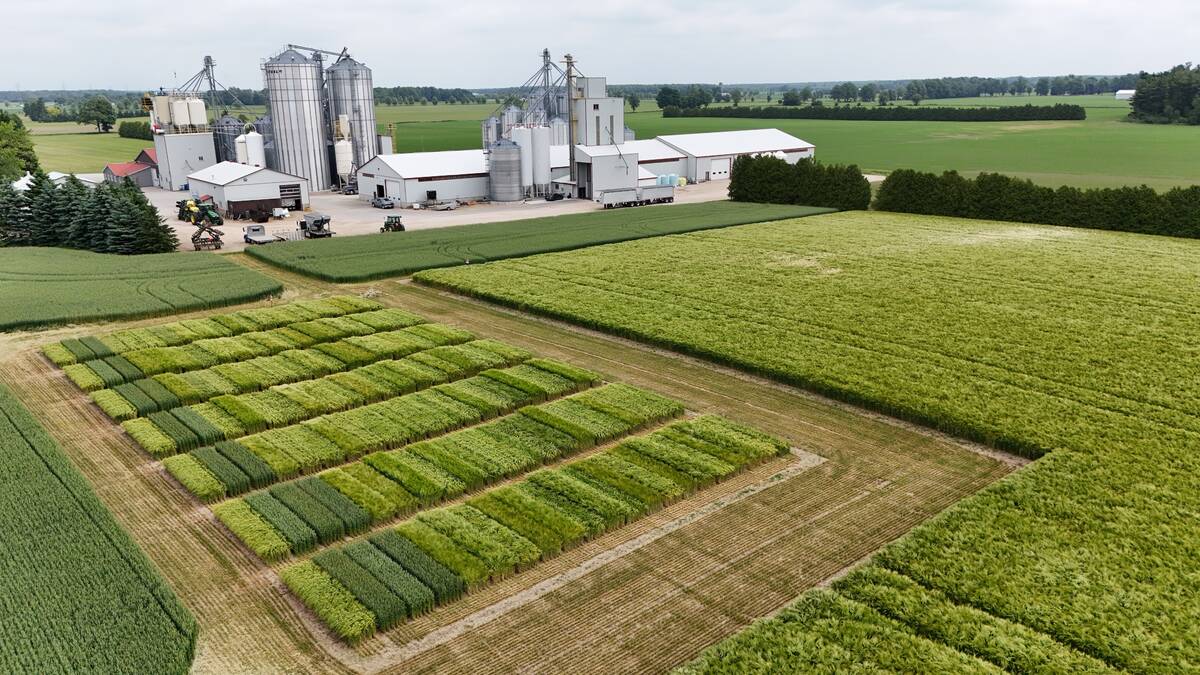China has long relied on imported food and feed ingredients for its livestock herds and poultry flocks, but there are signs that could change.
A Jan. 3 Feed & Grain article detailed a Chinese policy pledge to reduce soybeans in feed rations. According to the report, soybean meal usage for January to November of 2023 was 11 per cent lower than the same period the previous year. That translated to 4.44 million tonnes, and the full-year forecast is for a further drop of nine million tonnes.
Why it matters: China has typically been a net importer of soybeans but the country has indicated that it wants to increase domestic production.
Read Also

Winter cereals beyond wheat gaining traction
Winter cereals such other than wheat, such as barley, could provide better yield and rotation options for Ontario growers.
The directive is said to have come from President Xi Jinping, with a focus on prioritizing soybean production at home as opposed to importing from Brazil, the U.S. or other suppliers.
It’s too early to determine any long-term effects, including on Canada, says Scott Krakar, a grain merchandiser with London Agricultural Commodities. There are too many factors and influences at play to point at this recent move by China and say conclusively whether it will affect pricing or production.
“Each side of the balance sheet is constantly changing with various market expectations,” says Krakar. “If all things remained the same with the exception of a nine-million tonne reduction in world demand, prices would be reflected negatively. The world soybean trade is very dynamic and a negative input such as this may be simultaneously offset by another factor, such as declining production forecast due to drought, for example.”
Krakar says it’s uncertain whether Brazil or the U.S. would be most affected by the import reduction.
Soybeans are a commodity and China buys from both based on the price. It could affect one more than another or they could be affected in the same way.
“Soybean prices have been bearish (lower) recently, for a wide variety of factors,” says Krakar. “Much of the drive to lower pricing is due to a reasonably high U.S. ending stocks outlook and improving weather in Brazil. The announcement of China’s stated position in the reduction of soy usage would weigh into the market dynamic also, but may be even discounted if that position doesn’t seem likely.”
Krakar thinks the change will have little effect on 2024 planting intentions in Canada or the U.S.
Is self-sufficiency realistic?
This move points towards creating greater self-sufficiency, yet within the past 15 years, agricultural production in China has seen its share of ebb and flow. On the positive side, the government accepted the use of GMO technology in the mid-2010s, which was expected to increase production, albeit in corn.
But against that potential is a problem with desertification of tracts of the country’s arable land and a growing urgency surrounding the pollution of its water supply.
It begs the question of whether self-sufficiency can be easily or quickly managed.
“Like all nations, China would like to be self-sufficient, however the reality is their import needs are so vast, this cannot be materially changed in the near-term,” says Krakar. “There are so many world factors that play into the price of soys — and all commodities — that one single announcement, even a large one like this stated goal of China, is quickly discountedm as the market’s reflective of all collective information available. It’s not specific to one particular news item.”
Food and fuel
If the past three to four years have shown growers and the agri-food trade picture anything, it’s that accurate predictions are not a slam dunk. Martin Vanderloo, president of Huron Commodities in Clinton, has made several trips to China as part of trade delegations. The issues surrounding shipping containers alone is indicative of a trade world still grappling with shifts in the way it reacts to various influences.
Prior to the COVID-19 pandemic, it was possible to book a 40-foot container for US$3,500 for shipping product from Shanghai to Toronto. Following COVID, that price ran as high as $35,000, and today, it’s back down to $3,000.
“That’s pretty dramatic, and we’re still having issues with what we want, when we want it, and it’s gone the other way where vessels are not full,” says Vanderloo. “They’re being delayed because they’re not loaded. And now there are issues with the Suez Canal, where ships are getting shot at.”
He also expected a greater impact on the market from the Russian-Ukraine War, where there’s no sign of let-up and the two countries produce tremendous volumes of wheat, and in the case of Ukraine, corn as well. Then there are the standard concerns with the potential for changing politics in the U.S., and changing weather in South America.
“It sounds like Brazil’s got some moisture and Argentina’s on track to produce record volumes of soybeans,” adds Vanderloo. “The other side of that story is El Nino, and if you study that, they’ll tell you the dramatic effects of an El Nino happen two to six months after its demise, so we’re gearing up for the U.S. to have a pretty serious drought if that’s the truth.”
He says the other driver in the North American soybean complex is similar to the 1990s buildup of ethanol plants in the U.S., which helped buoy the corn sector.
“If you take that a step further currently, they’re building soybean-crushing plants in the U.S. to beat the band,” says Vanderloo. “They’re all racing to build crush plants for sustainable aviation fuel or biodiesel.”
That’s good news in the wake of any trade disruptions and is a bit of a push for self-sufficiency on this continent, although he points out that canola is the better option for biofuels in Canada, due to its oil content.
In the end, Vanderloo believes China will continue to favour Brazil and to some degree, Argentina, over the U.S. But soybean plants currently under construction south of the border will be up and running soon, which will drive demand for more U.S. soybeans versus exporting them to China.
Whether it boosts demand for Canadian soybeans, Vanderloo agrees that much of the production in Western Canada will be exported, with some potentially moving south. But the food-grade side has a tremendous upside because it’s a market growers understand and produce to spec.
“To me, it just makes more sense (because) that’s where the premiums are,” he adds. “The profits are right, as opposed to crush, so we’re not seeing any new crush plants being built here — at least, not in Ontario and Quebec for soybeans. Our farmers know what they’re doing with food grade — they get it.”















